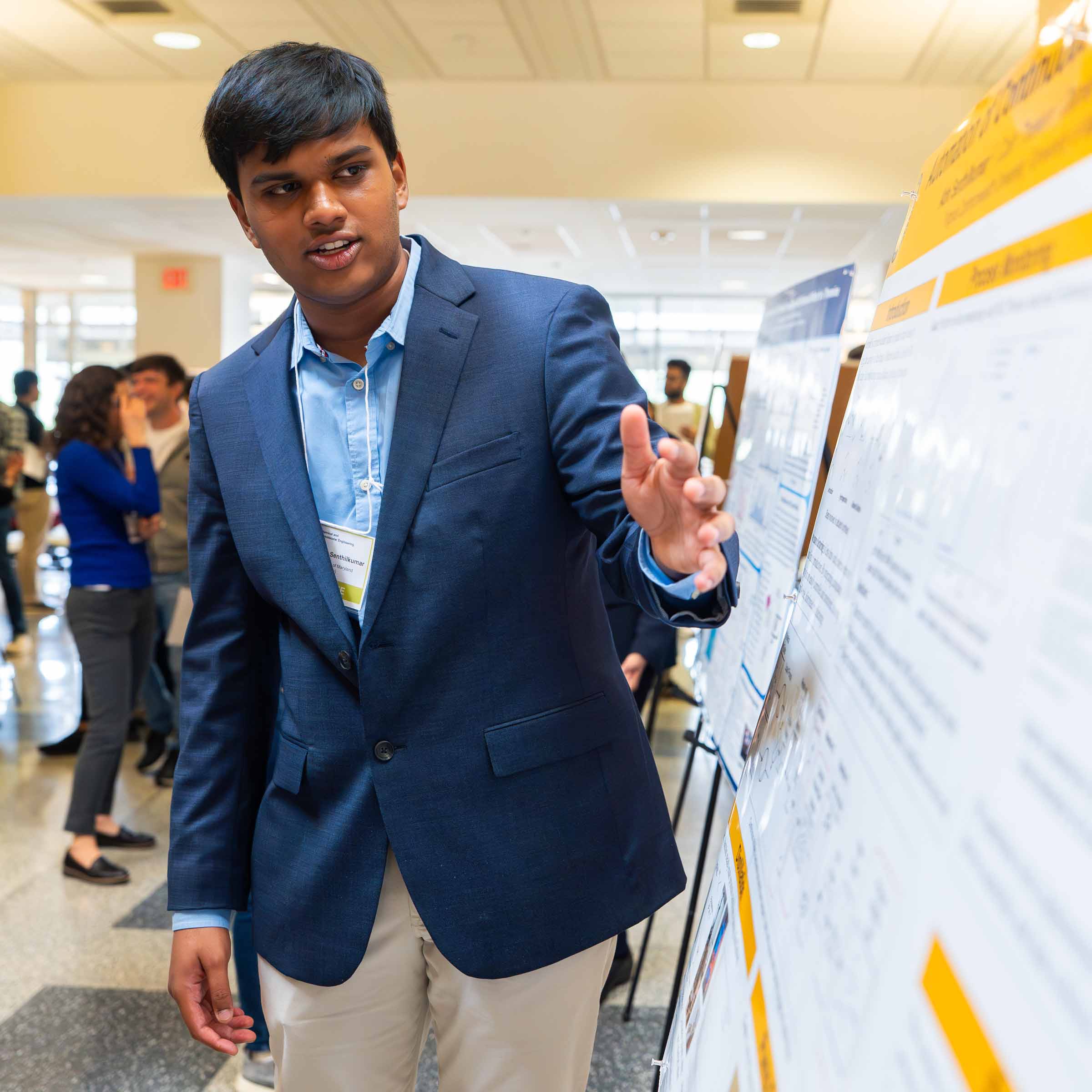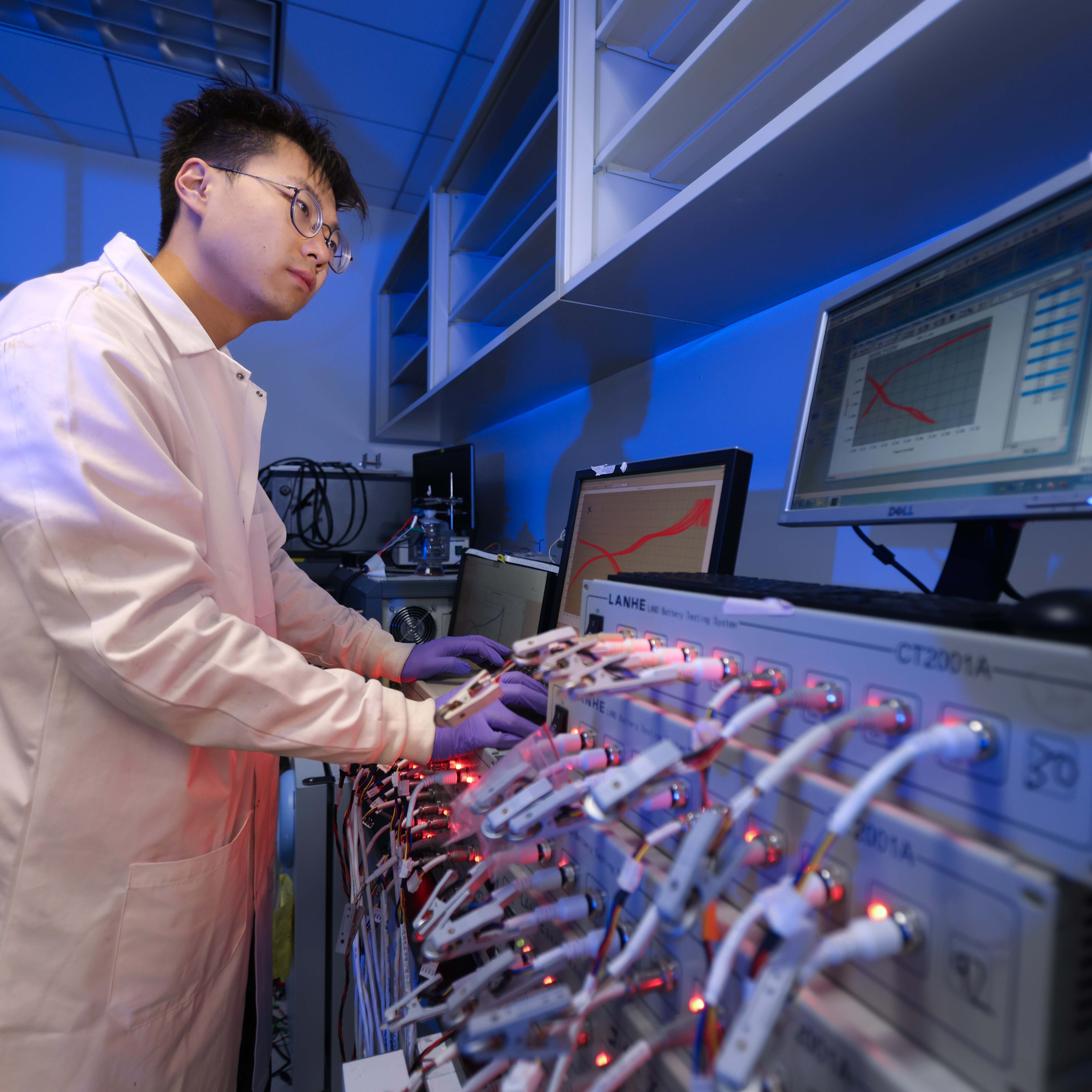News Story
2020 Dean's Doctoral Student Research Awards
The University of Maryland's A. James Clark School of Engineering has announced the winners of the 2020 Dean's Doctoral Student Research Awards. The competition recognizes distinguished graduate student researchers in order to help propel their careers and demonstrate the value of high-quality engineering research. Student entries were judged by members of advisory boards in department-level and final college-level competitions. Winners are listed below.
First Place: Kristina Stephens, Fischell Department of Bioengineering
Advisor: William Bentley, Robert E. Fischell Distinguished Professor
Project Title: Programming Bacterial Consortia for Autonomous Regulation and Coordinated Activity
The potential of genetically engineered microbes seems nearly infinite with applications ranging from human health to bioprocessing. However, it has often proven difficult to program single cell populations to carry out multiple or complex tasks effectively. The use of engineered consortia, where tasks are divided amongst populations that work together, can expand the processing power of synthetic biology systems but requires new tools for coordinating subpopulations. In this research, methods were developed for autonomous control of individual populations and their composition within multi-population bacterial systems. Quorum sensing processes, native systems for cell-cell communication, were re-engineered to enable signal-modulated cell growth rate and coordination between subpopulations. Using these tools, a co-culture was developed that autonomously adjusts its culture composition based on the level of a cue of interest. This illustrates a new approach in synthetic biology; rather than having one population detect and respond to a signal, multiple populations can coordinate their response to that signal. Simple mathematical models were developed to predict culture behavior given a range of conditions. The techniques developed here may enable further use of co-cultures or synthetic consortia by synthetic biologists and metabolic engineers for varied applications.
Second Place: Proloy Das, Department of Electrical & Computer Engineering
Advisor: Behtash Babadi, Assistant Professor
Project Title: Bayesian Modeling and Estimation Frameworks for Neuro-Imaging Data Analysis
The cortical activities that underlie our interaction with the physical and social environment admits well-structured representations in the temporal, spatial, or spectral domains, or combinations thereof. This research focuses on developing Bayesian tools for analysis of neuro-imaging recordings, with the ability to incorporate a-priori knowledge of such well-structured and biologically plausible representations, which the current explanatory current neural data analyses lack. In that spirit, this research proposes 1) Dynamic Bayesian Multitaper (DBMT), a semi-parametric spectral analysis method designed for non-stationary, fast evolving signals, to facilitate visualization of spectrotemporal signatures of various stages of sleep from electroencephalography, 2) Neuro-Current Response Functions (NCRFs), a set of linear filters, spatially distributed throughout the cortex, that identify the contribution of individual cortical sources towards the neural processing manifested in magnetoencephalography at a high spatio-temporal resolution. This research also brings Lasso-Granger causality (LGC) statistic and an easy testing scheme as a robust way of identifying causal relations from time-series data for understanding the mechanisms underlying many phenomena from neuroscience. In summary, the research aims at contributing to a deeper understanding of brain functioning via effective and efficient modeling of neuro-imaging data.
Third Place: Shenli Zou, Department of Electrical & Computer Engineering
Advisor: Alireza Khaligh, Professor
Project Title: A Gallium Nitride Integrated Onboard Charger
GaN devices are gaining momentum in power electronic systems, such as electric vehicle (EV) charging systems, due to their promises to significantly enhance the power density and efficiency. In this research, a GaN-based integrated onboard charger (OBC) and auxiliary power module (APM) are proposed for EVs to ensure high efficiency, high frequency, high power density, and capability of bidirectional operation. One of the impactful contributions is the introduction of a new charging function, grid-to-both (G2B) charging, to enable simultaneous charging of both high voltage (HV) and low voltage (LV) batteries. A hybrid phase shift-duty ratio modulation strategy is synthesized to minimize the circulating power, while realizing the power flow management and soft switching over all load range. Furthermore, a new three-winding high-frequency transformer design with improved power density and efficiency is achieved using a genetic-algorithm-based optimization approach. The experimental results showed that the GaN-based integrated charging system has the capability of achieving simultaneous charging of both HV and LV batteries with a peak efficiency of 95%.
Runner-up: Tao Deng, Department of Chemical & Biomolecular Engineering
Advisor: Chunsheng Wang, Professor and R.F. and F.R. Wright Distinguished Chair
Project Title: Electrolyte and Interphase Design for High-energy Rechargeable Metal Batteries
The ever-increasing demand for electric vehicles and consumer electronics, as well as the expanding market of intermittent renewable energy storage, has sparked extensive research on energy-storage devices with low cost, high energy density (> 500 Wh/kg), and safety. Developing new electrolytes that cater to the needs of high-capacity metal anodes (Li, Na, K, etc.) and high-voltage cathodes is critical for next-generation battery technologies with high energy. This research explored new electrolyte systems and proposed some interphase designing methods for stabilizing the electrolyte-electrode interfaces and supporting the next-generation battery chemistries beyond LIB technology. They include nonflammable fluorinated electrolytes for lithium metal batteries, interfacial engineering of solid-state batteries and low-cost potassium batteries. Being enabled by the fundamental and scientific breakthroughs in terms of electrochemical mechanisms, interface chemistry, as well as interface modification techniques, the present research has provided insights into the development of high-energy batteries for both academic and industrial communities.
Runner-up: Adam Pranda, Department of Materials Science & Engineering
Advisor: Gottlieb Oehrlein, Professor
Project Title: Plasma-Photoresist Interactions for Realizing Advanced Pattern Transfer Processes
Photoresist (PR) materials undergo significant physical and chemical modification from the ions, vacuum ultraviolet (VUV) photons, and reactive species that comprise a plasma etch process. The modifications of these materials, which are an integral component in the manufacturing process of semiconductor devices, has key implications on the control of the etching and roughening behaviors that are vital for establishing selective pattern transfer processes which maintain feature fidelity at increasingly smaller feature sizes and pitches. In this work, we utilized a combination of in-situ ellipsometry supported by x-ray photoelectron spectroscopy (XPS) and attenuated total reflection Fourier transform infrared (ATR-FTIR) spectroscopy to develop an ellipsometric model which interprets the correlation between the PR layer structure that develops due to energetic ion bombardment in a plasma process and the corresponding etching behavior. From this analysis, we found that energetic ion bombardment produces a dense amorphous carbon (DAC) layer on the PR surface that increases the etch resistance of the PR material. By applying this knowledge towards an industrial motivation, we found that the cyclic interaction consisting of ion bombardment of a deposited fluorocarbon layer in an atomic layer etching (ALE) process leads to the development of a similar modified layer that significantly reduces PR loss while simultaneously maintaining etching of SiO2. The resulting high SiO2/PR etching selectivity indicates the potential viability of PR surface modification as a pathway towards enabling pattern transfer processes that can produce complex semiconductor device features, such as high aspect ratio structures, while also being compatible with the limited thickness budget of modern extreme ultraviolet (EUV) PR materials.
Published July 1, 2020









